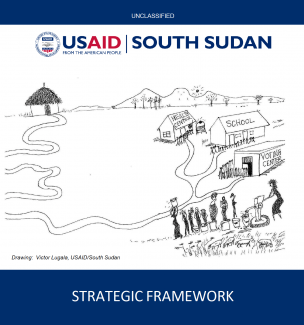The U.S. Government has a long history of supporting the people of South Sudan, including nearly $5.6 billion in emergency humanitarian assistance since the civil war erupted in December 2013, and more than $1.8 billion in development assistance since South Sudan’s independence in 2011. Today, our humanitarian assistance keeps millions of people alive by providing emergency food; shelter; water, sanitation, and hygiene; nutrition; cash distribution; and health services to those in need. Despite our significant financial assistance, over half of the population still depends on emergency aid to survive and millions are displaced from their homes due to violent conflicts. Even with the bilateral donor community disbursing over $605 million in humanitarian assistance in 2019 and the multilateral community almost $650 million, more than two million people who need assistance are not receiving it.
On February 22, 2020, the major parties to the civil conflict that began in 2013 formed a Revitalized Transitional Government of National Unity (R-TGoNU). While this is a significant step on the path toward self-reliance, the road ahead is rough. Continued conflict, disease outbreaks, and increasingly frequent environmental shocks will further increase the need for emergency assistance over the coming years. At the same time, continued annual U.S. Government assistance totaling hundreds of millions of dollars in humanitarian assistance is not sustainable and development assistance has trended downward. Yet recent work in resilience shows that with sustained investment and a community-centered and -led approach, each dollar invested in resilience and early response can yield nearly three dollars in reduced humanitarian spending and avoided asset losses.
Learning from USAID's resilience programming globally and taking into account lessons learned and expertise from years of USAID operations in South Sudan, we plan to carefully lay the foundation for self-reliance, reducing high levels of humanitarian need that cannot sustainably and indefinitely be met. Despite recent political progress in establishing the beginnings of a transitional government, the absence of a functional government means that South Sudan’s Journey to Self-Reliance starts at the community level, boosting community and household-level resilience so that families are better equipped to weather the shocks that will inevitably come. The Mission’s five-year, scenario-based strategy will use a community-focused approach to help targeted households and communities move beyond a critical need for humanitarian aid and assume greater responsibility in shaping their own future.

